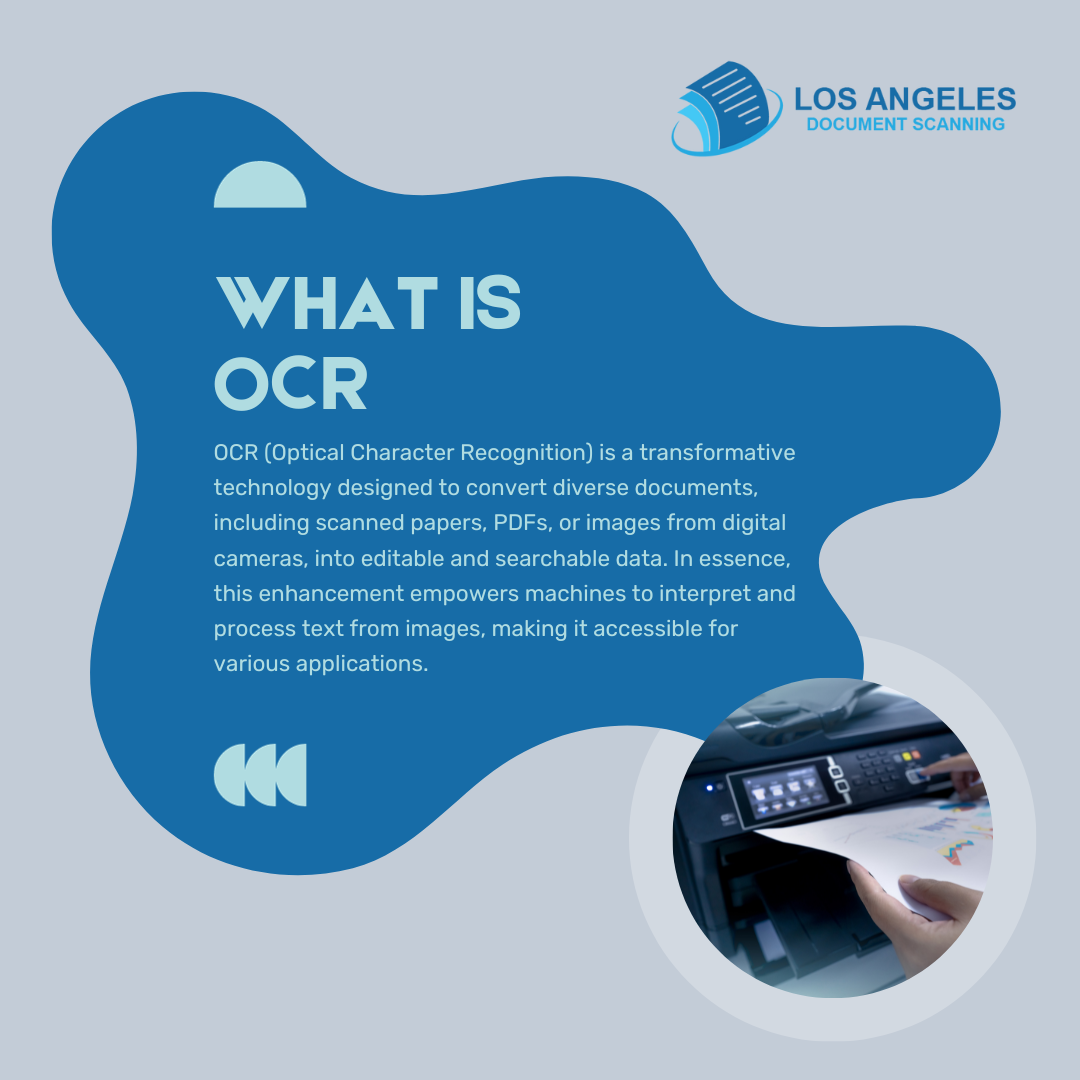In the contemporary digital landscape, Optical Character Recognition, or OCR, stands as a pivotal technology, revolutionizing the way we handle textual information. This guide aims to elucidate the essence of OCR, its functioning, and its profound impact on our digitally-driven society.
What is OCR?

OCR (Optical Character Recognition) is a transformative technology designed to convert diverse documents, including scanned papers, PDFs, or images from digital cameras, into editable and searchable data. In essence, this enhancement empowers machines to interpret and process text from images, making it accessible for various applications.
How OCR Works: A Comprehensive Breakdown
- Image Capture: Initiated by capturing an image of the document, Optical Character Recognition operates seamlessly with scanned pages, smartphone photos, or any digital images.
- Pre-processing: Prior to analysis, the captured image undergoes pre-processing to enhance quality. This involves tasks such as noise reduction, contrast adjustment, and image binarization.
- Text Detection: OCR algorithms discern text regions through advanced techniques, distinguishing between text and non-text elements.
- Character Recognition: Identified text regions undergo character recognition, where characters are identified and translated into machine-readable text through pattern matching.
- Post-processing: Following character recognition, post-processing steps refine results, correcting errors and ensuring accurate representation of the text.
- Output: The end result is machine-encoded text, editable and searchable for use across various applications.
Applications of OCR: Where Innovation Meets Practicality
1. Document Digitization: Optical Character Recognition transforms physical documents into digital formats, facilitating storage, retrieval, and sharing of information.
2. Data Extraction: Businesses utilize OCR for extracting information from invoices, receipts, and forms, streamlining data entry processes.
3. Accessibility: OCR makes printed or handwritten content accessible to individuals with visual impairments by converting it into speech or braille.
4. Translation Services: Translation apps leverage OCR to recognize and translate text, breaking down language barriers seamlessly.
5. Mobile Applications: Integration of Optical Character Recognition in mobile apps enhances user experiences, enabling tasks like text recognition, augmented reality, and document scanning.
Start the Scanning Process Today
With continuous technological advancements, Optical Character Recognition is evolving to new levels of sophistication. Machine learning and artificial intelligence are enhancing accuracy, particularly in handling diverse fonts, languages, and document layouts. The versatility of OCR applications continues to expand, promising innovation and efficiency across various domains.
In conclusion, Optical Character Recognition emerges as a dynamic force, reshaping our interaction with textual information. From simplifying data entry to ensuring accessibility for a broader audience, document scanning solutions stand at the forefront of our digital evolution. Contact Los Angeles Document Scanning for a free quote on document scanning and OCR services. Give us a call at (310) 598-7350 or fill out the form.
